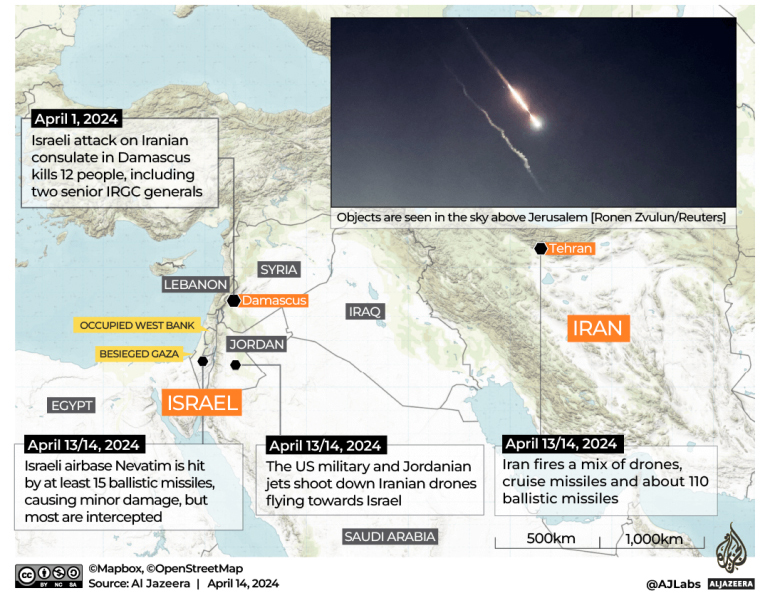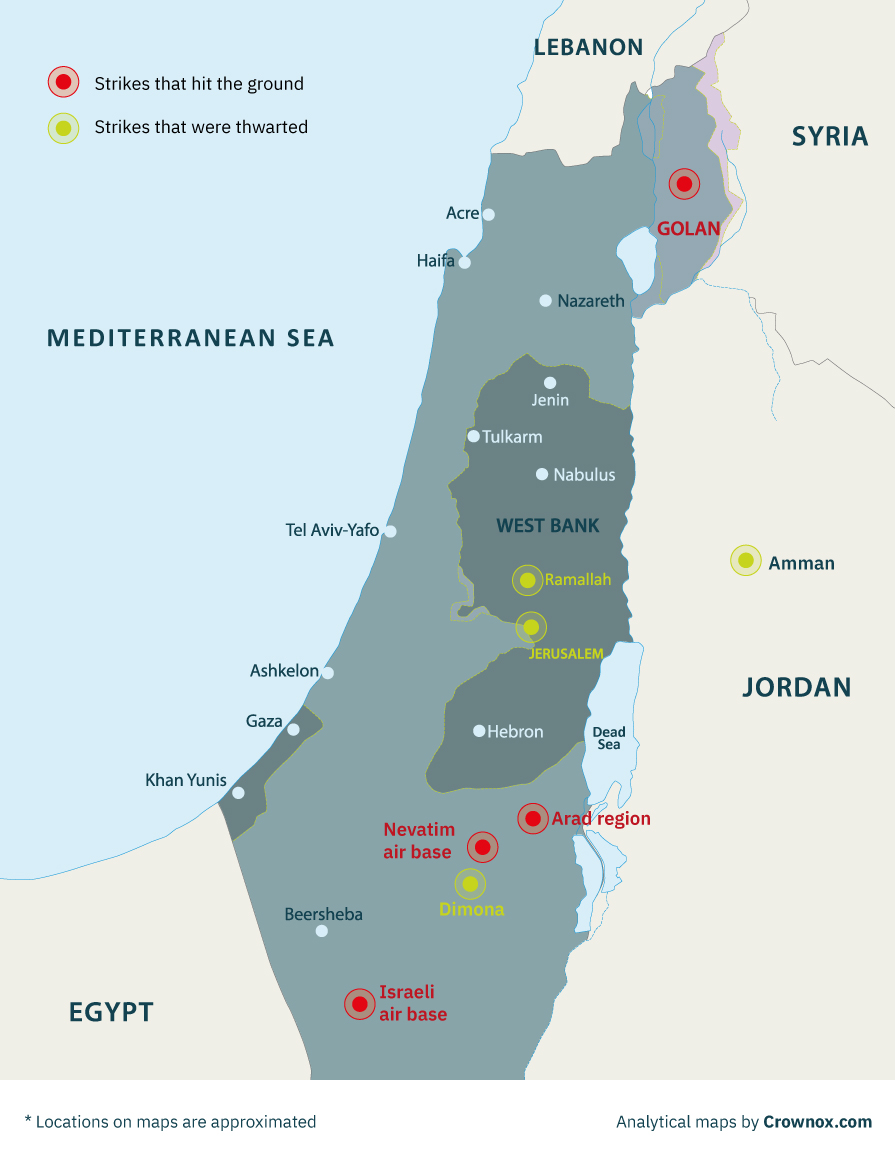Since the assassination of Soleimani in 2020, the shadow of war between Israel and Iran has hovered closely. Despite Iranian threats in response to Soleimani's killing, there was no immediate retaliation. However, tensions escalated when Israel targeted another high-ranking IRGC commander, Razi Mousavi, in Syria in December 2023, coupled with the recent attack on the Iranian embassy. These actions have culminated into Iran launching more than 300 drones and missiles on Israel on April 13th, the largest ever drone strike in the world, and the biggest missile attack in its history.

What is the significance of Iran’s response?
The Iranian response poses a significant strategic shift both politically and militarily:
-
Since the Gulf War in 1991, no country, aside from Iraq, had launched a direct attack on Israel. This is intricately linked to the longstanding policy of deterrence that successive Israeli governments have sought to establish over decades. However, the Iranian strike, like the events of October 7th, underscored a notable failure of Israeli deterrence. It became evident that the primary objective behind Iran's actions was to showcase its own deterrence capabilities, which critics argued had been weakened due to escalated tensions and military actions by the United States and its allies in the region, particularly after the assassination of top general Qassem Soleimani in Iraq in January 2020.
-
The assertion of the robustness and efficacy of the Shiite coalition, demonstrating its capacity to exert influence across the region, as the Iranian response came from four axes; Yemen (Ansar Allah), Iraq, Hezbollah, and Iran. The objective was multifaceted, intending to articulate a direct message towards multiple recipients, including Israel, the United States, and Arab nations aligning themselves with the Israeli-American axis.
-
In the days leading up to the strike, Iran made a pointed declaration, affirming its commitment to avoiding civilian casualties by explicitly stating its intention not to target civilian gatherings. Additionally, Iran released aerial imagery pinpointing the military installations slated for attack, demonstrating the ability to carry out a controlled strike with no casualties.
-
The locations targeted also bore strategic significance :
- Jerusalem: the epicenter of Israeli governmental institutions, most notably the Knesset, the strike conveyed a potent message: no institution, no matter its significance, is beyond reach.
- The southern front: it was deliberately chosen for its concentration of Israeli military infrastructure.

Economic Outcome
The closure of the airspaces of Jordan, Syria, Lebanon, and Israel, prior to the strike, inflicted substantial financial setbacks. This compounded the economic toll already incurred from the war on Gaza since October 7th. Additionally, the expenditure on air defense systems surpassed a billion dollars, further exacerbating the Israeli ongoing economic challenges. The withdrawal of investments by numerous international companies and Jewish investors from the Israeli market has perpetuated this economic strain, a trend that shows no signs of subsiding.
Domestic Outcome
The Iranian strike led to a reduction in the intensity of demonstrations and protests within Israeli society against Netanyahu. Hence, it can be inferred that Netanyahu is employing diverse tactics to inflame all arenas to serve his personal interests and prolong his stay in power.
Israel’s retaliation:
On Friday April 19th, Iran deployed air defense batteries across the country following reports of explosions near Isfahan airport in Isfahan province. Three small drones were shot down over the central city of Isfahan by the air defense batteries. Flights were suspended nationwide for four hours before resuming. Additionally, explosions were reported in Iraq and Syria. However, no casualties were reported, and both Israel and Iran denied a direct attack. Analysts suggest that the strike may have been mediated by the US, possibly in exchange for a partial ground invasion of Rafah. Israeli officials expressed disappointment with Israel's limited retaliation efforts.
The threat of war between Israel and Iran, has been long standing and weather this is the first glimpse of what is to come, or merely a show of capabilities is yet to be seen.


.jpg)